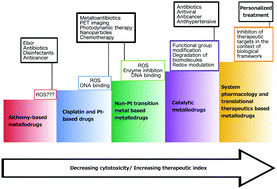Designing metallodrugs with nuclease and protease activity
Abstract
The accidental discovery of cisplatin some 50 years ago generated renewed interest in metallopharmaceuticals. Beyond cisplatin, many useful metallodrugs have been synthesized for the diagnosis and treatment of various diseases, but toxicity concerns, and the propensity to induce chemoresistance and secondary cancers make it imperative to search for novel metallodrugs that address these limitations. The Amino Terminal Cu(II) and Ni(II) (ATCUN) binding motif has emerged as a suitable template to design catalytic metallodrugs with nuclease and protease activities. Unlike their classical counterparts, ATCUN-based metallodrugs exhibit low toxicity, employ novel mechanisms to irreversibly inactivate disease-associated genes or proteins providing in principle, a channel to circumvent the rapid emergence of chemoresistance. The ATCUN motif thus presents novel strategies for the treatment of many diseases including cancers, HIV and infections caused by drug-resistant bacteria at the genetic level. This review discusses their design, mechanisms of action and potential for further development to expand their scope of application.

- This article is part of the themed collection: Nickel in biology

 Please wait while we load your content...
Please wait while we load your content...